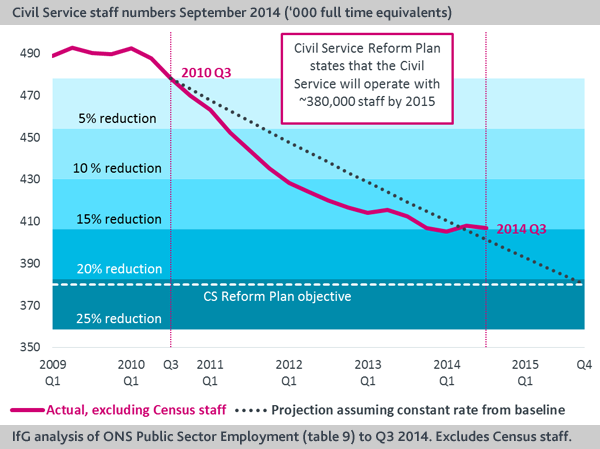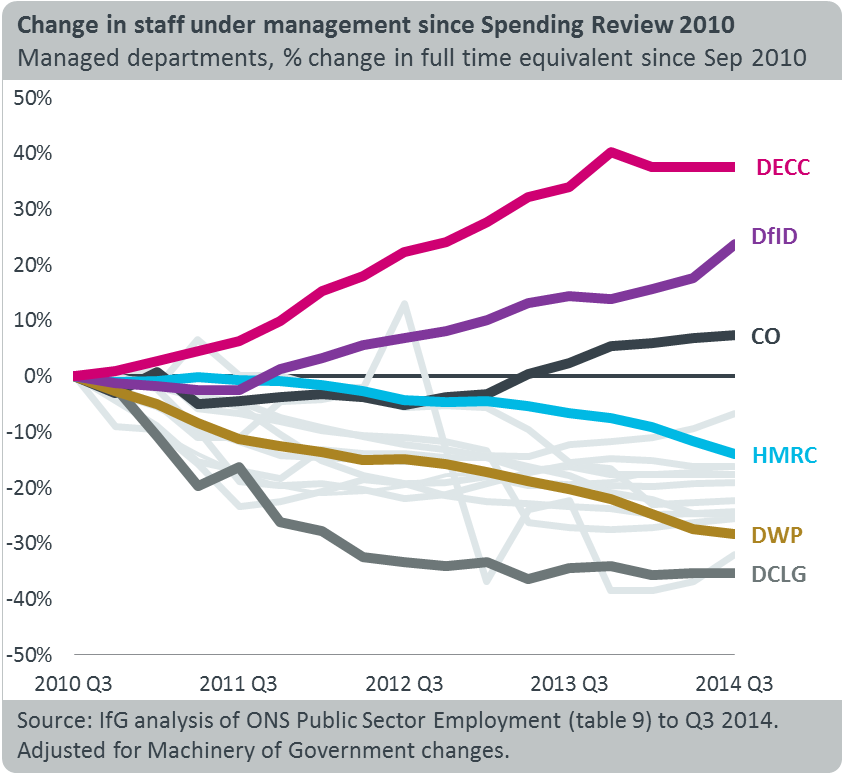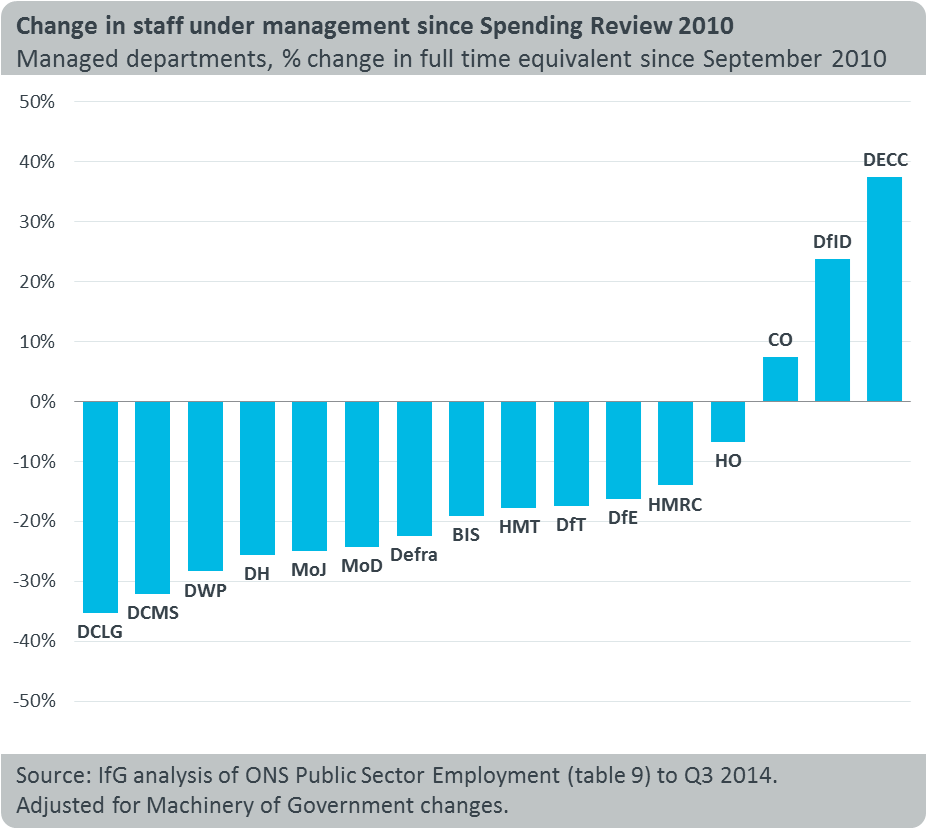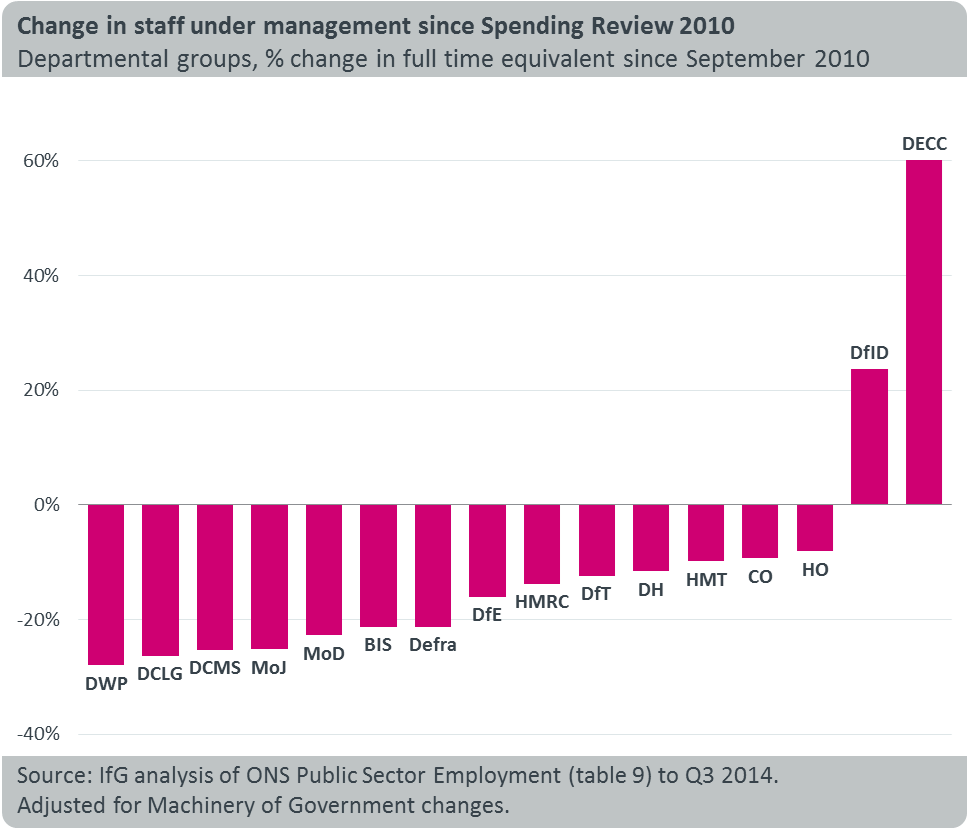Counting down but not enough? The latest civil service staff numbers
The government will miss its targets, but there still has been significant change.
Today, the Office for National Statistics released the latest data for public sector employment, which report Civil Service staff numbers as of the end of September 2014. Petr Bouchal looks at what it tells us about the Civil Service, and how it relates to the government’s efforts to save money. He finds that the government is off track to meet its aspiration to downsize the Civil Service to some 380,000 full time equivalents (FTE) by 2015. But there has been a significant amount of change nonetheless. In the four years since the 2010 Spending Review, most departments have reduced their staff numbers by between 15% and 30%.
The civil service now employs 406,690 FTE, down 1,360 on the previous quarter.

DWP, MoJ and HMRC all reduced staff numbers by hundreds
Most of the overall decrease in staff numbers in the last quarter was driven by significant cuts in DWP (down 1,090 FTE or 1.3%) and HMRC (down 1,590 FTE or 2.5%), which outweigh increases in several other departments. MoJ also made reduction (280 FTE, 0.4%), but the headcount in MoD has grown for the second subsequent quarter. Home Office – the last of the five large departments – has increased the size of its workforce by 690 (3%), the largest increase in an upward trend of the last 8 quarters.

HMRC reductions are accelerating, DWP continuing long-run trend

Five departments have reduced by a quarter or more, DECC has grown by almost 40%

Agencies typically reduced less than managed departments

Civil Service workforce is dominated by large delivery departments

- Topic
- Civil service
- Keywords
- Austerity Civil servants Civil service reform Machinery of government Budget Coalition government
- Administration
- Cameron-Clegg coalition government
- Publisher
- Institute for Government